How to Take Action: Turning Ideas into Action
How to Take Action: Turning Ideas into Action

If you consider yourself a creative person, you know how difficult it can be to keep up with all the ideas you have on a daily basis.
Maybe you write some of them down, maybe you even start executing on some of them, but you still feel pretty torn and not sure how to turn your best ideas into action.
In this blog post, we’re going to talk about how to take action and I will give you 3 practical tips that will help you turn your ideas into action.
Here’s an audio version of this blog post:
Before we get into my tips on turning ideas into action, I want to quickly mention three possible reasons why you’re not taking action right now.
Reason #1: You’re feeling overwhelmed
If that’s the case, check out this article where I share my 5 tips on how to stop feeling overwhelmed and get things done.
Reason #2: You’re easily distracted
If I had to choose one reason for not turning most of my ideas into action, it would be this. I’m extremely easily stimulated by all the things that happen in my mind, so I need to make the conscious decision to slow down, take a few deep breaths, and focus on only one task at a time.
Reason #3: You’re afraid of failure
If you’re often fantasizing about creating things but not actually putting the work, you may be afraid of failure. There are many people who are even afraid of success, so you need to make sure to do some inner work because fear can keep you stuck only until your passion to take action becomes bigger than the fear itself.
Okay, there are many other possibilities why you’re not currently taking action, but what’s important now is to focus on the solutions.
1. Make a Reality Check
When you’re assessing an idea, it may sound like the best idea in the world at first, but you need to give it a little bit of time to settle, maybe do something else for a few hours or days, and then come back to it.
Giving your brain some time to rest is crucial if you want to do a good reality check. After you’ve given your idea enough time to settle, look at it again and think if it’s as good as it seemed in the beginning.
To assess it even better, ask yourself the following questions:
✔ Is this something that I want to pursue?
✔ Is this something that can turn into a reality or is it more like a dream?
✔ What steps do I need to take to achieve this goal?
✔ Will I need outside help to turn this idea into action? Who can I ask?
✔ Where can I find more information?
✔ What is the first little action step I can take right now to get me closer to achieving it?
2. Take One Action Step RIGHT NOW
I know you’re busy, I know you have millions of other things to do. But if you don’t take action right now, you’re probably going to procrastinate. And that is not how you turn ideas into action.
So, please, before you go any further into this article, please go and do something — just a little tiny thing that will bring you closer to achieving your goal.
Here are some examples for aspiring entrepreneurs: make a phone call to someone who can help you, think of a brand name for your business, search for a graphic designer for your logo. Whatever that little step is, don’t postpone it. Do it now.
3. Have a Bigger Purpose
If you’re trying to turn an idea into action, it’s not enough just to go with it. You need to have a bigger purpose behind it because that will keep you going when you’re having a bad day or you’re questioning your abilities to turn it into action.
A bigger purpose can be to help people, to financially support your family, to move to another city or maybe advance in your career. Here are some questions you can ask yourself to find the bigger WHY behind your idea:
✔ If I turn this idea into reality, what would it bring to my life?
✔ How will I feel if I achieve my goal?
✔ How would that affect the important people in my life?
✔ What do I want to accomplish in the end?
✔ What will happen if I don’t even try?
✔ If I look back 20 years from now, will I regret not doing this?
Having perspective will help you gain more clarity in your life. Not every idea is going to be brilliant and not every idea is worth pursuing.
That’s why it’s important to assess whether or not this current idea you’re having is something you should put your focus on or maybe you should toss it and move on with your life.
Whatever you decide, please let me know in the comments below:
What do you do to turn your ideas into action?
Take Action Projects: Social Distancing Style
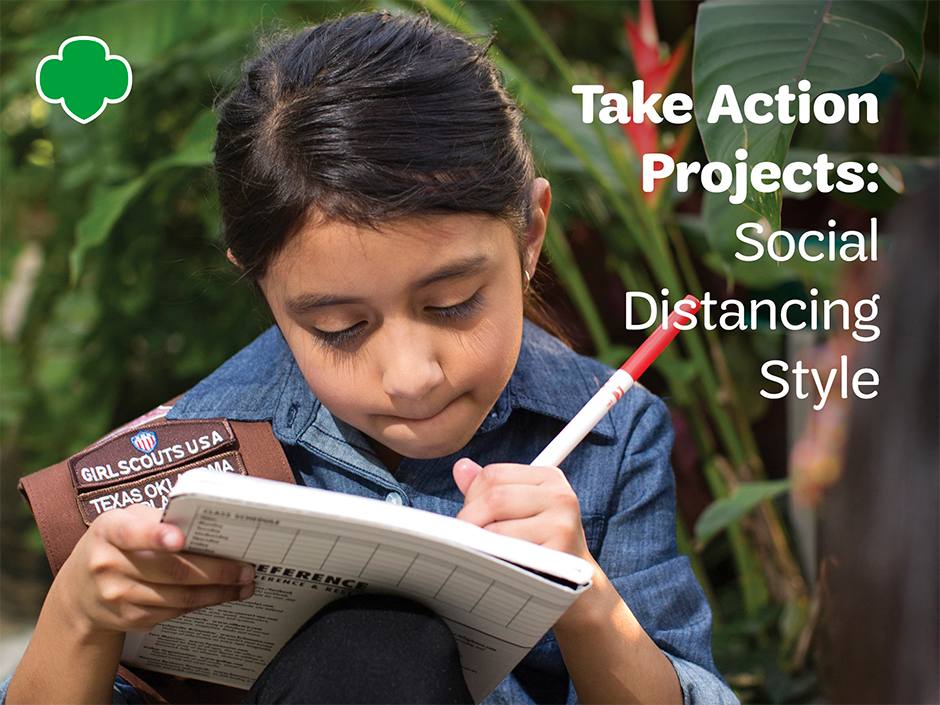
One of the coolest things about Take Action projects is their flexibility and versatility. Your Girl Scout can dive into problems that she finds interesting and relevant, then spend lots of time working on it or spend just a little time. She can reach out to her nearby friends and family or impact the larger community. Throughout the whole process, she’ll develop project planning and leadership skills and make a difference.
Before we go any further, I’m going to back it up. Let’s explore what Girl Scout Journeys are, why we do them, and how those inspire Take Action projects. Then, we’ll talk about how to execute a Take Action project in a time of social distancing. (Because you’re right, it’s going to look different!)
What’s a Girl Scout Journey?
A Girl Scout Journey is different than a skills-based badge. It’s an extended engagement with a topic that inspires Girl Scouts to create a Take Action project to make the world a better place. Journeys and Take Action projects are created specifically for leadership development because they challenge Girl Scouts to think critically, work collaboratively, and act intentionally.
Girl Scouts has a variety of Journeys for any interest. Classic Journeys explore topics like environmental justice or relationships with friends and society. STEM Journeys dive into how to think and act like scientists, and Outdoor Journeys develop skills for being environmental champions.
What Exactly is a Take Action Project?
A Take Action project is different than a community service project, because Take Action projects address the root cause of an issue and provide a sustainable solution. Girl Scouts of the USA suggests three ways to make a project sustainable:
- Make your solution permanent.
- Educate and inspire others to be part of the change.
- Change a rule, regulation, or law.
Here at Girl Scouts River Valleys, we’ve found that educating and inspiring others to be a part of the change can be one of the best ways to create sustainable solutions. Just think about the ripple effect—if a Girl Scout can teach someone and inspire them to recycle, then that person teaches two more people, and so forth. She has created quite the movement!
We also recognize that Take Action projects look different for every girl—based on her age, interest, and experiences. So, we’ve created a handy Take Action Project guide and broken it up into five components. You can use these components to evaluate your Take Action project, where Your Girl Scout is at, and where she could expand her project.
How Does She Take Action While Maintaining Social Distance?
Remember what I said? Perhaps one of the coolest things about Take Action projects is their flexibility and versatility. While it’s true that Take Action projects are going to look different than they did a couple of months ago, social distancing isn’t an obstacle that Girl Scouts can’t overcome. Here are a few ideas to get you started:
- Virtual events or virtual town halls: Think about what communities you are a part of. How can you reach them and explore topics they want to learn about?
- Videos: Think public service announcements or instructional videos. What can you teach someone or inspire them to care about?
- Advocacy: It’s always a good time to figure out how to engage your local legislature. Call, email, write a letter about an issue you care about. How many others can you organize to join your movement?
- Digital technology: How can you use social media and digital technology to be a force for good? Can you create an educational webpage or game?
- Kit creation: Do a project, create “kits” with instructions for other to follow your lead.
Please remember to follow social distancing guidelines—variations of “lemonade stands” or going door-to-door are not encouraged.
How Do We Know if We Did it Right?
Do you know that expression, “It’s not about the destination, it’s about the journey?” We often joke that is the perfect phrase for a Take Action project. A Journey and a Take Action project are a process, so continual reflection throughout is a great practice.
- Does this project address an issue or need in the community?
- Was it girl-led and a sustainable solution? (Hint: If you can confidently say that your Girl Scout “created, educated, inspired, organized,” then you’re good to go!)
- What did you learn? Are there things you would want to remember for next time?

Abby Lown – Abby is a STEM Program Coordinator at Girl Scouts River Valleys. She graduated from the University of St. Thomas with a degree in Biology and spent three years teaching in the Peace Corps in Mozambique. When she isn’t creating cool STEM programs for Girl Scouts, she loves finding new adventures in the Twin Cities or trying her hand at a new recipe.
40 Green Travel Tips (The Ultimate Guide to Sustainable Travel)
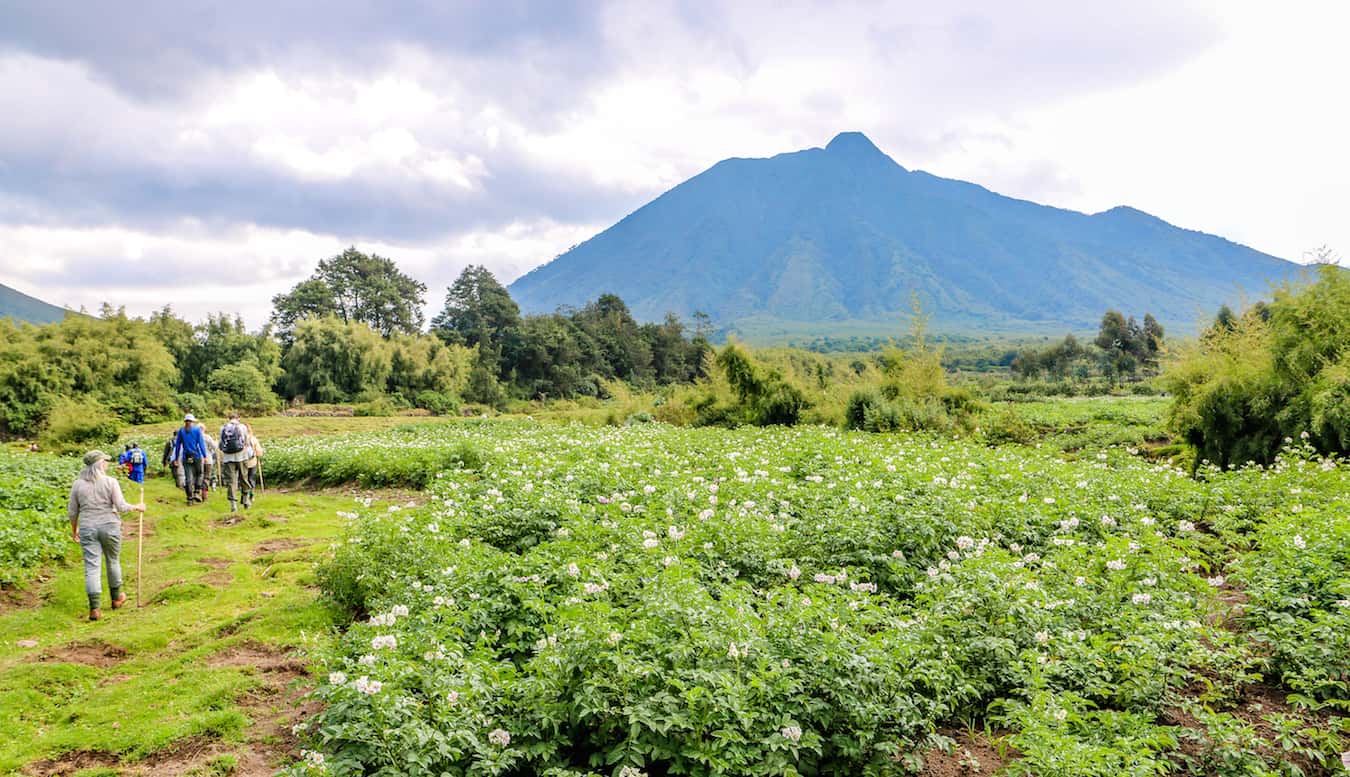
Disclaimer: This post may contain affiliate links. All hosted affiliate links follow our editorial policies.
[Updated 12/16/2019] If you took a poll asking people whether they’d prefer to be responsible or irresponsible travelers, most would likely choose the former over the latter.
But what does “Green Travel” even mean? How do you do it? Do you have to sleep in a tent and cook on a solar-powered camp stove in order to be considered eco-friendly?
And how do you recognize it when a company that offers “Green Travel” experiences is, in fact, just greenwashing?
The truth is that sustainable travel (a.k.a. ecotourism) is all about making simple choices in order to lessen your negative impact on a given destination.
Individually, each one of these choices makes only a small difference in the big picture. But collectively, becoming more conscious about these little things can have a huge cumulative impact.
So here’s an in-depth look at what Green Travel is, why it matters, and an extensive array of easy tips designed to help you travel more responsibly and sustainably.

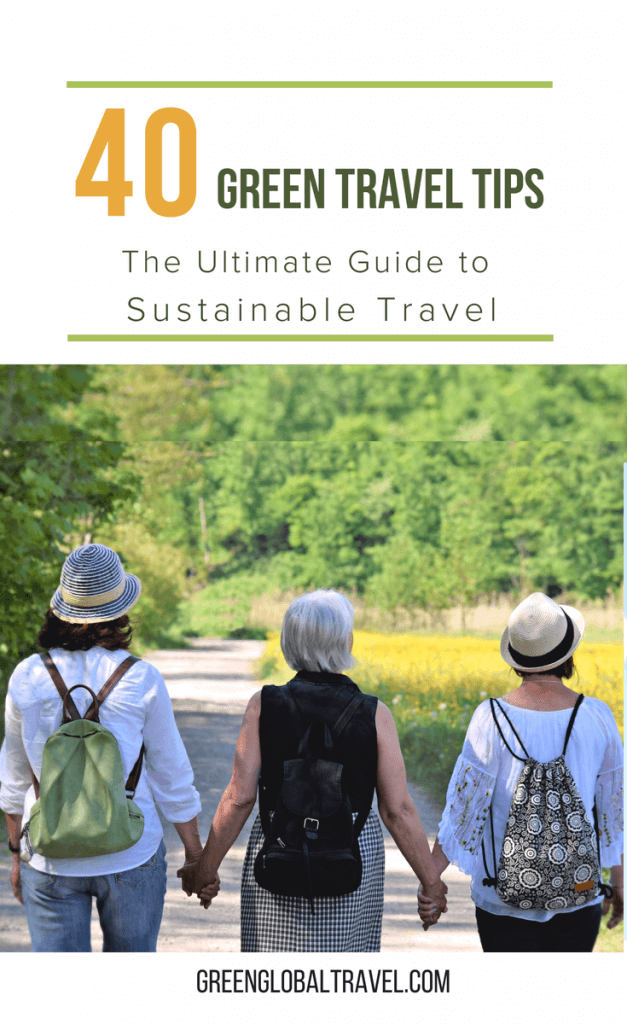
WHAT IS GREEN TRAVEL?
When we started Green Global Travel back in 2010, the field of ecotourism was largely unknown to average travelers. It had not yet become the buzzword it is today, and was primarily a term used by insiders in the fields of responsible travel and conservation.
But green energy– renewable energy harnessed from sustainable natural sources such as sun, wind, tides, and geothermal heat– was gaining steam as a movement thanks to thought leaders such as Al Gore . Green living– the lifestyle that aspires to conserve and protect the Earth’s natural resources, habitats, and biodiversity– was beginning to grow in popularity.
“Green” became synonymous with “eco-friendly” or “environmentally conscious.” So green travel came into vogue as a broad term used to encompass ecotourism and responsible travel practices, which generally strive to benefit the environment and the social and economic well-being of the local people.
When done well, green travel is the antithesis of mass tourism. It’s all about trying to make smarter choices that help to mitigate the negative impacts we create when we travel.
We cannot control the carbon emissions of the planes we fly in, the chemicals used by the hotels in which we stay, or the plastics used in the souvenirs sold in the destinations we visit. But we can choose more eco-friendly transportation, hotels, tour operators, and shopping tactics that do less damage to the environment, and create more benefits for local people.
According to a recent TripAdvisor survey, nearly two-thirds of all travelers are increasingly inclined to make more environmentally sound choices and travel green. The problem is, how do we tell the difference between green travel and greenwashing?
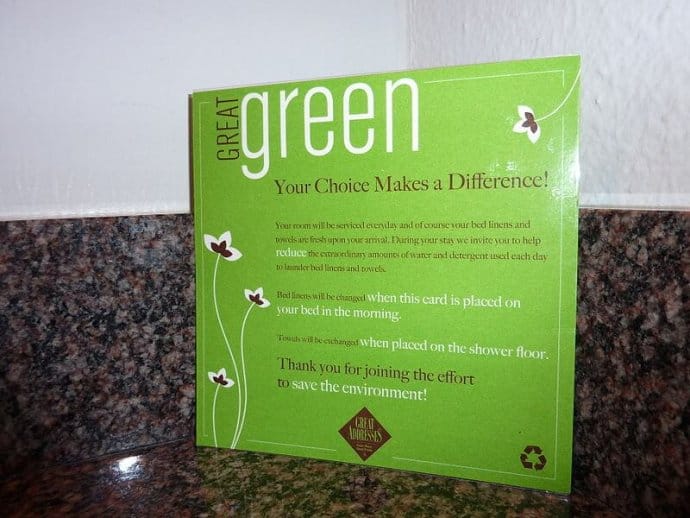
photo by Teda13 via CC BY-SA 3.0
GREEN TRAVEL VS. GREENWASHING
A play on the term “whitewashing,” greenwashing is defined as “disinformation disseminated by an organization so as to present an environmentally responsible public image.” In other words, greenwashing is about using marketing strategies in an effort to deceive customers into believing that a company’s products, activities, or policies are genuinely eco-friendly when they really aren’t.
As the green movement gradually began to enter the mainstream, countless companies proved willing to greenwash if it brought them the green they wanted most: Money. Adjectives such as “all natural,” “organic,” and “post-consumer recycled content” were rendered meaningless, as claims were rarely substantiated or verified by impartial third parties.
The travel industry was no different. Tour operators who promoted themselves as being eco-friendly still offered irresponsible activities such as walking with lions tours, elephant rides, and visits to Thailand’s Tiger Temple. So how are travelers to know whether a company is truly green, or just greenwashing?
• Truly responsible travel businesses will put the needs of the local people and environment before the needs of travelers, always striving to make a positive impact.
• If there is a voluntourism element involved, truly responsible travel businesses will work directly with local NGOs to ensure the program meets the needs of the community and are not just “feel good” experiences for travelers. Again, the primary goal should be long-term positive impact.
• Truly responsible travel businesses may be affiliated with international organizations such as World Wildlife Fund, the Nature Conservancy, Rainforest Alliance, etc. They may also have certification from organizations such as the Global Sustainable Tourism Council or the Center for Responsible Travel, which prove that they have met certain recognized standards for sustainability.
• Truly responsible travel businesses pride themselves on openness and transparency. Most will have details on their sustainability and corporate social responsibility initiatives clearly placed on their website. And any “green” company should be more than happy to answer any questions you may have about these initiatives.

40 GREEN TRAVEL TIPS
What we’ve assembled below are 40 tips that EVERY traveler can use to make their adventures more friendly to the environment and the people and animals who inhabit it.
Most of them are ridiculously simple, such as using a refillable water bottle, putting a “Do Not Disturb” sign on your hotel room door, and buying locally made products rather than imports.
But if every one of our 90,000+ unique monthly visitors gradually began incorporating these Green Travel tips into their trips, our collective impact could be amazing!
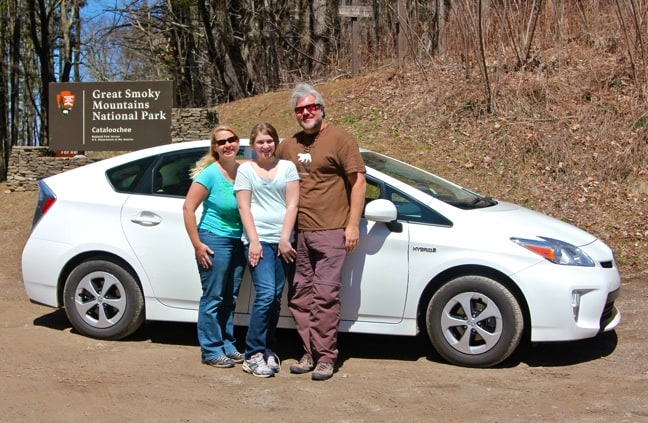
The Toyota Prius We Rented for Great Smoky Mountains National Park Road Trip
GREEN TRANSPORTATION TIPS
1. Try to book non-stop flights whenever you can: It’s the takeoffs and landings that create most of an airplane’s carbon emissions.
2. If you’re traveling with family or friends and the destination is within driving distance, perhaps you should consider taking a road trip . But if you’re traveling by yourself, it’s actually much more eco-friendly to fly!
3. If you do fly, consider doing so with one of the 30+ IATA (International Air Transport Association) member airlines who offer carbon offset programs to neutralize the aircraft’s carbon emissions by investing in carbon reduction projects.
4. If you decide to drive to your destination and your car isn’t eco-friendly, consider renting a hybrid or electric vehicle, which use less fuel and produce less carbon emissions than gas-guzzlers.
5. If you have the time, traveling via bus, train, or ship generally has less negative environmental impact than traveling by plane.
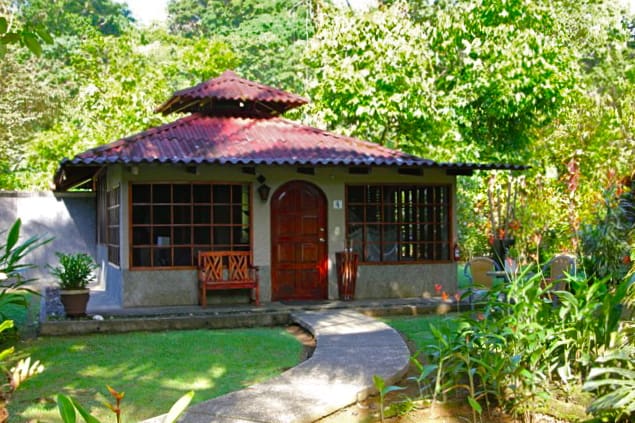
Casa Corcovado, Which Earned 5-Leaf Sustainability Rating from Costa Rica
TIPS FOR CHOOSING GREEN HOTELS
6. When traveling in the U.S., check to see if the hotel has LEED Certification from the U.S. Green Building Council. The program judges hotels on sustainable site development, water savings, energy efficiency, material selection, indoor environmental quality, and innovation in design.
7. When traveling overseas, look for seals of approval from other certification programs, such as EarthCheck (Australia), Green Globe , Rainforest Alliance (Latin America, Caribbean), and Green Tourism Business Scheme (UK). Some countries, including Costa Rica, have their own certification programs to rate sustainability initiatives.
8. Ask if the hotel has a recycling program. If not, encourage them to start one when you leave suggestions on comments cards at check-out.
9. Ask questions about the hotel’s sustainability initiatives, such as solar power, wind turbines, rainwater harvesting, energy-efficient lighting, and low-flow toilets.
10. Find out what percentage of the hotel’s resources are local. Do they hire mostly local staff? Do they get most of their foods locally, or even grow them on the property? Do they use locally sourced materials in the décor? Companies that utilize indigenous resources tend to be more sustainable, as they’re investing in the local economy.

Mary Showers at Screw’s Sulphur Spa in Dominica
WATER-SAVING TRAVEL TIPS
11. Take a BPA-free water bottle you can refill over and over again. Many international airports have free water dispensers, which saves you money and wasting plastic bottles.
12. Take showers, not baths. Showers use just 10-25 gallons of water, while baths use up to 70 gallons. Feeling frisky? Shower with a friend and save even more water!
13. Try to take shorter showers, turning the water off while you lather up, shampoo, shave, and/or brush your teeth.
14. Never use the hotel laundry, as they typically wash every guest’s clothes separately (even when there are only a few items). We usually wash our clothes as we shower, then hang them up overnight so they’re dry the next day.
15. Hang up your towels after each use, which is the universal sign that you’d like to use them again. You don’t wash your towels every day at home, so why do it when you travel?
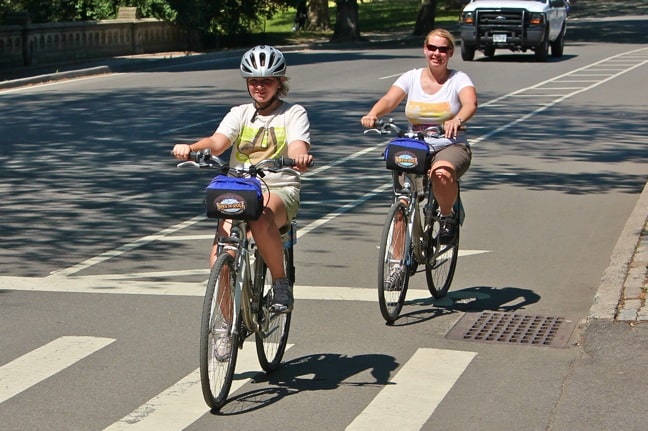
Mary & Alex Riding Bikes Around Central Park
ENERGY-SAVING TRAVEL TIPS
16. When you leave your room, always turn off all lights, heat/AC, and television. Closing the curtains and blinds can help keep out the heat of the sun in summer.
17. Leave the “Do Not Disturb” sign on the door of your room for the duration of your stay. This cuts down on chemical cleansing agents, electricity used in vacuuming, and the washing of bed linens.
18. Walk, bike, or use public transportation to get around whenever possible, which cuts down on gas usage and saves you money.
19. Return maps, brochures, and other tourist info once you’re finished with them so that they may be reused by future travelers.
20. Take any leftover soap, shampoo, or toothpaste with you. Unused portions are often thrown away, and you can reuse the plastic bottles in the future.
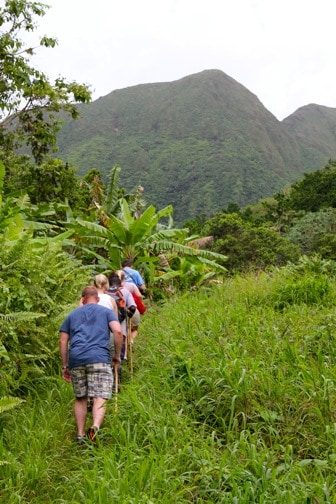
Hiking in the Rainforest of St Kitts
GREEN HIKING TIPS
21. Marked hiking trails are there for a reason. Stick to the path to avoid harming native flora and avoid any creepy-crawlies that may be lurking in the underbrush.
22. Bring along a small bag and pick up any trash you spot along your hike. Have a friendly competition to see who can clean up the most unsightly waste!
23. Never feed or touch wildlife, for any reason. Feeding animals makes them habituated to and reliant on humans, and often leads to attacks. If you get bit, the animal will most likely be killed.
24. Research weather conditions and terrain before you go hiking. You don’t want to be that guy (or girl) who got lost and required a ranger rescue, which drains public resources.
25. Keep a respectful distance from wildlife. Yes, we understand that you want to Instagram your encounter with a grizzly bear. But if you’re close enough to attract an animal’s attention, you’re too damn close!

Shopping From Ribereños in the Peruvian Amazon with International Expeditions
GREEN SHOPPING TIPS
26. Buy locally made (preferably handmade) products, rather than those that have been imported. Items that are flown or shipped in have a much larger carbon footprint, and who wants a cheap, cookie-cutter souvenir made on an Asian assembly line?
27. Don’t buy anything made from endangered plants/animals, unsustainable hardwoods, or ancient artifacts. Not only is it wrong, but you probably won’t be able to get them back through customs.
28. Take your own reusable bag when you go shopping. Plastic bags are SO 20 th century…
29. Seek out indigenous artisans when you can. When you buy directly from an artist, you’re not only helping them feed their family, but in many cases you’re helping to preserve their culture. We’ve also heard some pretty amazing stories by chatting these artisans up.
30. Do not buy souvenir photos from anyone exploiting wildlife, such as the famous performing elephants of Thailand .
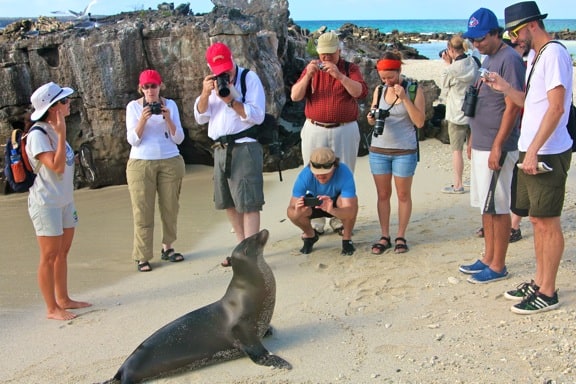
Exploring the Galapagos Islands With Ecoventura
ECO-FRIENDLY TOUR TIPS
31. Travel with small group tour operators, which tend to have less of an environmental impact. Membership in an organization like the Global Sustainable Tourism Council is a good sign that the tour operator tries to conduct itself in a responsible, sustainable manner.
32. When snorkeling or Scuba diving , don’t touch/step on the coral or stir up sediment, as it can damage the reef’s fragile ecosystem.
33. Ask your snorkel or scuba diving tour operators if they chum the water to attract marine life. Doing so can change the behavior of marine species, or possibly make them sick.
34. Find out how the tour operator gives back to the local community. Do they lease the land from locals? Do they hire local guides? Do they take a leading role in preserving the area’s natural resources? Community-based tourism is the most sustainable.
35. Don’t take any tour that promises hands-on encounters with wild animals, such as riding elephants or walking with lions . If you do, you’re supporting an industry that illegally captures, transports, and abuses millions of animals each year.

Sunset Over Wadi Rum with New Friends Ali and Hassan
TIPS FOR BEING A GREEN TRAVELER
36. Honor local customs. Do a little research before you travel to learn about the destination’s local cultural traditions, so that you can speak and behave appropriately.
37. Ask for permission before taking a photo of someone. In some cultures, taking a person’s picture is like stealing their soul. and in general it’s just common courtesy.
38. Learn the language, or at least a few important words. You don’t have to do a full Rosetta Stone course. But you’d be amazed by how knowing simple phrases such as “Thank you,” “My name is,” and “Please help me” will impact the way locals will treat you.
39. Give back. Whether you sign up for a full-on voluntourism vacation or work with a non-profit like Pack For A Purpose to provide much-needed supplies to local schools, it doesn’t take a lot of extra effort to make a huge difference in the local community when you travel.
40. Immerse yourself in the local culture. Be a participant, not just an observer. Half the fun of traveling is getting an opportunity to step outside your comfort zone and try different foods, listen to different music, and explore different cultures. So, seriously, don’t be that guy who goes to India and insists on ordering a hamburger! –Bret Love; photos by Bret Love & Mary Gabbett
If you enjoyed our epic list of Green Travel Tips, you might also like:
Source https://coachsimona.com/blog/how-to-take-action/
Source https://volunteers.girlscoutsrv.org/2020/04/07/take-action-projects-social-distancing-style/
Source https://greenglobaltravel.com/green-travel-tips-ultimate-guide-sustainable-travel/